#the empress: margaret
Note
lyric ask,,,every hhsa character /hj
okay bitch (affectionate) let's fucking go
juno: half awake, i wander through this house / lost in a labyrinth and left with no way out / i built this hall of mirrors all myself / the faces staring back at me look like somebody else - wander. wonder. by the arcadian wild OR so throw on the black dress, mix in with the lot / you might wake up and notice you're someone you're not / if you look in the mirror and don't like what you see / you can find out first hand what it's like to be me - the end! by my chemical romance
nat: oh but i'm quite small and i never have it all together / and i'm just a girl who doesn't have any diamonds or pearls / but don't give me your pity 'cause there's more to life than pretty things / so i'll just give you me - five foot three by flannel graph
eloise: well, i'm just a stranger, i'm only a walker / i guess i am human, but sometimes i feel / like i'm only a ghost, like i'm only a wall / and if you come around, honey / i'll probably just follow you home / 'cause it's all that i know how to do - steamboat by adrianne lenker
andrés: and you've come to know me stubborn as a butcher / and you've come to know me thankless as a guest / will you recognize my face / when god's awful grace / strips me of my jacket and my vest? - hymn #101 by joe pug
lawrence: there's rules to life i know / and if you follow them you'll go / up to the mountains and the clouds / and where the golden rivers flow / but I've always been so good at breaking all the rules / i wasn't made to be their robot / and i ain't nobody's fool / i am the goat that got away / but i know there will come a day / when i'll be punished for my mind / 'cause i led myself astray - what's a devil to do? by harley poe
margaret: i picked up the sword that you gave me today / took your blessing and then i made my way / hoped the first challenge would be easy / oh, great deku tree, would you please me? / all the heartless want my blood / all of the gods wanna spit me out as cud / if I don't make it out alive / at least i'll see my undead wife - the dying song by montaigne
draven: so kiss me now / this whiskey on my breath / feel the lives that i have taken / what little soul that i have left / and oh, my god / i'll take you to the grave / the only love i've ever known / the only soul i ever saved - chasing twisters by delta rae
pidge: and i have so many / questions / about life, the universe / and everything / i look up at the / stars at night / and i sometimes wonder / if the atheists were right / 'cause this world is getting worse / don't know if i wanna be here after the night - 42 by sage crosby
northernfield: hey, danny-boy, i was thinking of our crew / but thinking just makes me sad, and that’s why i write to you / how do you do? / there’s been years between us / didn’t we have big ideas when our school was done? / we’d leave our smaller minds and move out to oregon / but i was the only one / who went the road less taken - those days are gone, and my heart is breaking by barton carroll
ebony: out of the blue, everything's new / all the talk we heard was true / the legends we all heard once / the whispers from the storefronts / hope for the best / prepare for the worst / we wait like stock-piled landmines, ready to burst / wait all your life to see what you see / open up your eyes and be free - sicilian crest by the mountain goats
juniper: i dragged her down / i put her out / and back there i left her where no one could see / and lifeless, cold / into this well / i stared as this moment was held for me - drowning lessons by my chemical romance
claire: but counting down the days to go / it just ain't living / and i just hope you know / that if you say / good-bye today / i'd ask you to be true / 'cause the hardest part of this / is leaving you - cancer by my chemical romance
this genuinely emotionally wrecked me thank you for this ask do come again
#radio free junebug#asks#ask game#sir nat#herronimus academy#jukebox#the moon: juno#the sun: nat#the tower: eloise#the chariot: andrés#the fool: lawrence#the empress: margaret#the emperor: draven#judgement: pidge#bascus northernfield#bramwell ebony#juniper evans#claire dumont
3 notes
·
View notes
Text
A central element of the myth of [Eleanor of Aquitaine] is that of her exceptionalism. Historians and Eleanor biographers have tended to take literally Richard of Devizes’s conventional panegyric of her as ‘an incomparable woman’ [and] a woman out of her time. […] Amazement at Eleanor’s power and independence is born from a presentism that assumes generally that the Middle Ages were a backward age, and specifically that medieval women were all downtrodden and marginalized. Eleanor’s career can, from such a perspective, only be explained by assuming that she was an exception who rose by sheer force of personality above the restrictions placed upon twelfth-century women.
-Michael R. Evans, Inventing Eleanor: The Medieval and Post-Medieval Image of Eleanor of Aquitaine
"...The idea of Eleanor’s exceptionalism rests on an assumption that women of her age were powerless. On the contrary, in Western Europe before the twelfth century there were ‘no really effective barriers to the capacity of women to exercise power; they appear as military leaders, judges, castellans, controllers of property’. […] In an important article published in 1992, Jane Martindale sought to locate Eleanor in context, stripping away much of the conjecture that had grown up around her, and returning to primary sources, including her charters. Martindale also demonstrated how Eleanor was not out of the ordinary for a twelfth-century queen either in the extent of her power or in the criticisms levelled against her.
If we look at Eleanor’s predecessors as Anglo-Norman queens of England, we find many examples of women wielding political power. Matilda of Flanders (wife of William the Conqueror) acted as regent in Normandy during his frequent absences in England following the Conquest, and [the first wife of Henry I, Matilda of Scotland, played some role in governing England during her husband's absences], while during the civil war of Stephen’s reign Matilda of Boulogne led the fight for a time on behalf of her royal husband, who had been captured by the forces of the empress. And if we wish to seek a rebel woman, we need look no further than Juliana, illegitimate daughter of Henry I, who attempted to assassinate him with a crossbow, or Adèle of Champagne, the third wife of Louis VII, who ‘[a]t the moment when Henry II held Eleanor of Aquitaine in jail for her revolt … led a revolt with her brothers against her son, Philip II'.
Eleanor is, therefore, less the exception than the rule – albeit an extreme example of that rule. This can be illustrated by comparing her with a twelfth century woman who has attracted less literary and historical attention. Adela of Blois died in 1137, the year of Eleanor’s marriage to Louis VII. […] The chronicle and charter evidence reveals Adela to have ‘legitimately exercised the powers of comital lordship’ in the domains of Blois-Champagne, both in consort with her husband and alone during his absence on crusade and after his death. […] There was, however, nothing atypical about the nature of Adela’s power. In the words of her biographer Kimberley LoPrete, ‘while the extent of Adela’s powers and the political impact of her actions were exceptional for a woman of her day (and indeed for most men), the sources of her powers and the activities she engaged in were not fundamentally different from those of other women of lordly rank’. These words could equally apply to Eleanor; the extent of her power, as heiress to the richest lordship in France, wife of two kings and mother of two or three more, was remarkable, but the nature of her power was not exceptional. Other noble or royal women governed, arranged marriages and alliances, and were patrons of the church. Eleanor represents one end of a continuum, not an isolated outlier."
#It had to be said!#eleanor of aquitaine#historicwomendaily#angevins#my post#12th century#gender tag#adela of blois#I think Eleanor's prominent role as dowager queen during her sons' reigns may have contributed to her image of exceptionalism#Especially since she ended up overshadowing both her sons' wives (Berengaria of Navarre and Isabella of Angouleme)#But once again if we examine Eleanor in the context of her predecessors and contemporaries there was nothing exceptional about her role#Anglo-Saxon consorts before the Norman Conquest (Eadgifu; Aelfthryth; Emma of Normandy) were very prominent during their sons' reigns#Post-Norman queens were initially never kings' mothers because of the circumstances (Matilda of Flanders; Edith-Matilda; and#Matilda of Boulogne all predeceased their husbands; Adeliza of Louvain never had any royal children)#But Eleanor's mother-in-law Empress Matilda was very powerful and acted as regent of Normandy during Henry I's reign#Which was a particularly important precedent because Matilda's son - like Eleanor's sons after him - was an *adult* when he became King.#and in France Louis VII's mother Adelaide of Maurienne was certainly very powerful and prominent during Eleanor's own queenship#Eleanor's daughter Joan's mother-in-law Margaret of Navarre had also been a very powerful regent of Sicily#(etc etc)#So yeah - in itself I don't think Eleanor's central role during her own sons' reigns is particularly surprising or 'exceptional'#Its impact may have been but her role in itself was more or less the norm
355 notes
·
View notes
Text


F&B CHARACTER MOODBOARDS AS HISTORICAL FIGURES THEY REMIND ME OF:
Alicent Hightower as Margaret Beaufort
Rhaenyra Targaryen as Empress Matilda
#fire and blood#hotd#alicent hightower#rhaenyra targaryen#margaret beaufort#empress matilda#whom i believe she is based on#english history#plantagenets#tudors
25 notes
·
View notes
Text
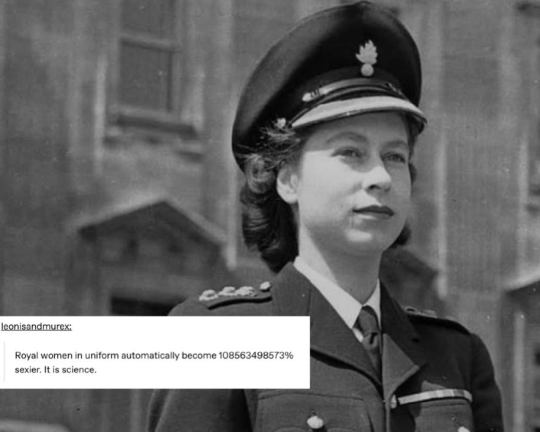

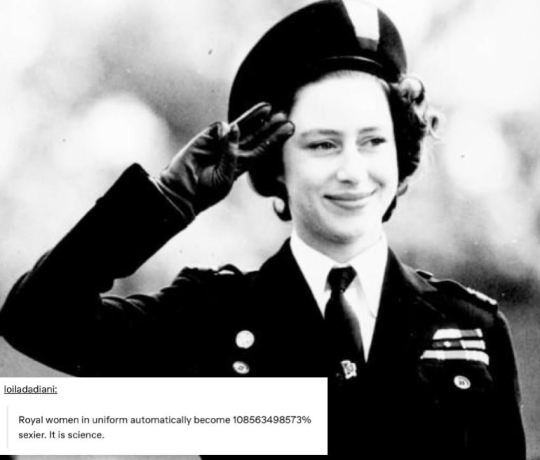
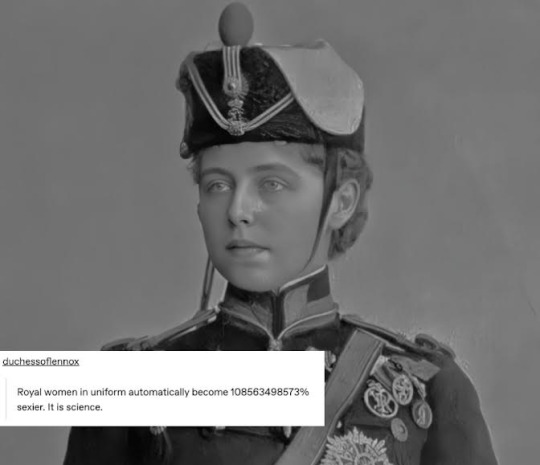

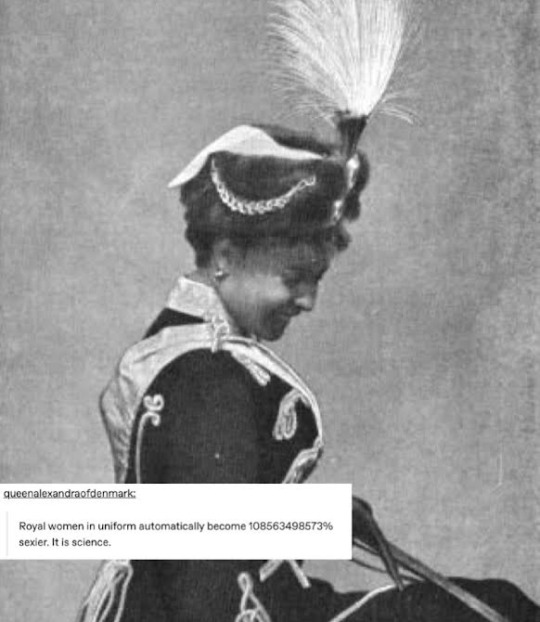
royal women + text post memes ✨💗
(thanks friends who participated!)
#hehehehehehehhe#thank u @duchessofvolterra for inspiring this post! 💖#queen elizabeth ii#princess anne#princess royal#princess margaret#queen marie of romania#crown princess marie of romania#princess Elisabeth#duchess of brabant#victoria princess royal#empress victoria of germany#crown princess victoria of prussia#royal women
97 notes
·
View notes
Text
Milk baths and bad smells








#korekiyo shinguji#kirumi tojo#cruise ship au#danganronpa ask blog#There are legends that Cleopatra bathed in goat milk daily for her complexion. These legends have not been confirmed and some historians be-#lieve that Roman Empress Poppaea (wife of Nero) set this bathing fashion after Cleopatra's death.#Queens Catherine Parr and later Elizabeth I of England bathed in milk in the belief that it would make their skin appear more youthful and#pale.Tincture of benzoin was also referred to as a 'milk bath' in the United States in the 1800s#which could in some cases be confused#for baths of cow milk#also popular at the time. There are references to cows milk as a bath technique found in India in the 1800s in#“Fifty-one years of Victorian life” by Margaret Elizabeth Child Villiers#Countess of Jersey. In the early 1900s#singer and Broadway star#Anna Held was reported to bathe in milk daily. She was later quoted as having bathed in milk two times a week when living in Paris#finding#it difficult to do so while traveling. Her husband Florenz Ziegfeld Jr. later reported to the press that she bathed in milk daily and set up#photo shoots so that reporters could photograph the milk being delivered to her. A buttermilk bath was also a common historical bathing#technique for show animals and remains in practice today (such as for pigs and dogs).#- That's Korekiyos Rambling (it's from Wikipedia)
16 notes
·
View notes
Note
prettiest royal woman iyo?
Queen Alexandra

Empress Maria Feodorovna

Grand Duchess Tatiana Nikolaevna
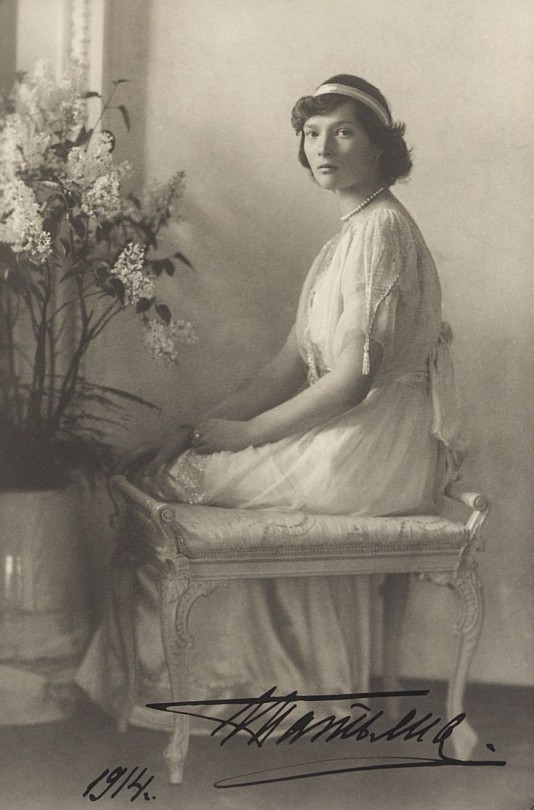
Empress Victoria of Germany
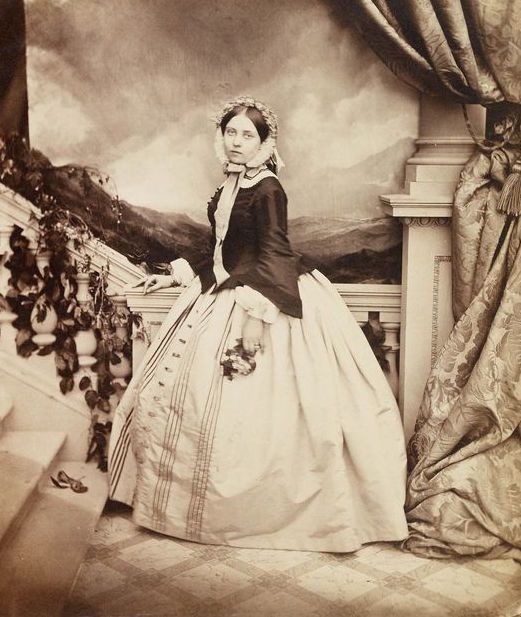
Queen Maud of Norway

Grand Duchess Elisabeth Feodorovna
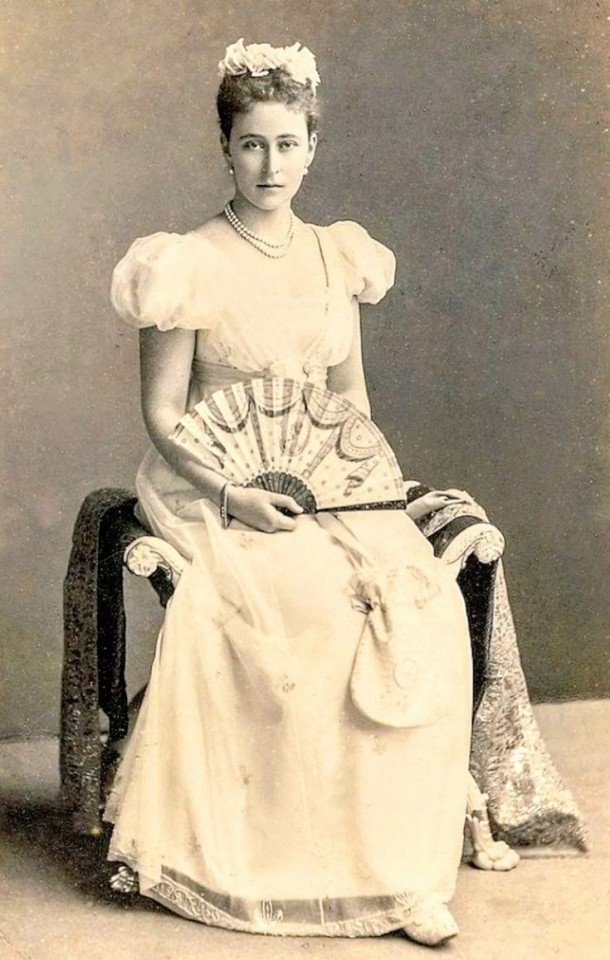
Queen Sophia of Greece
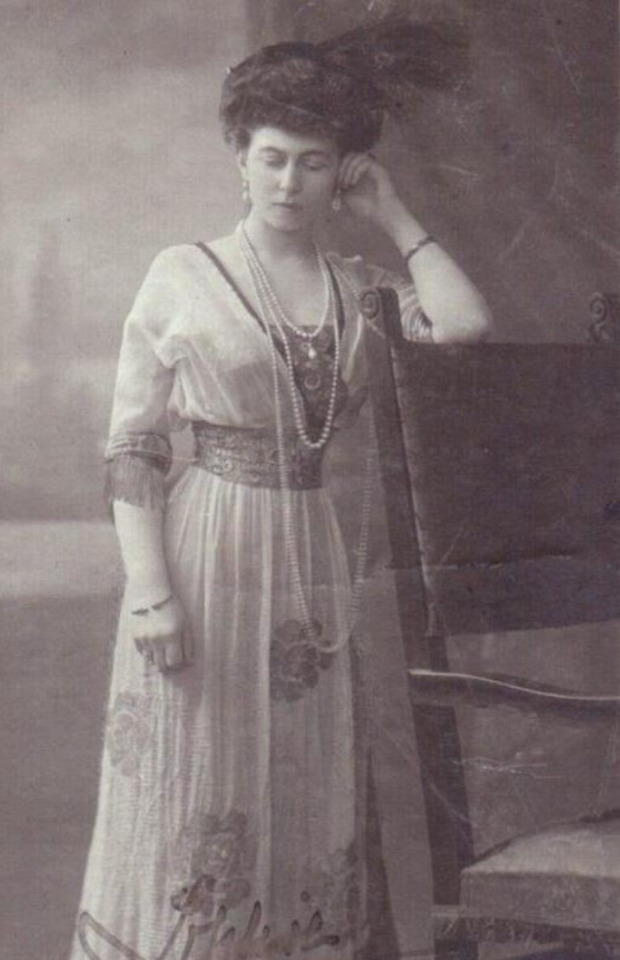
Queen Maria Sophie of the Two Siciles
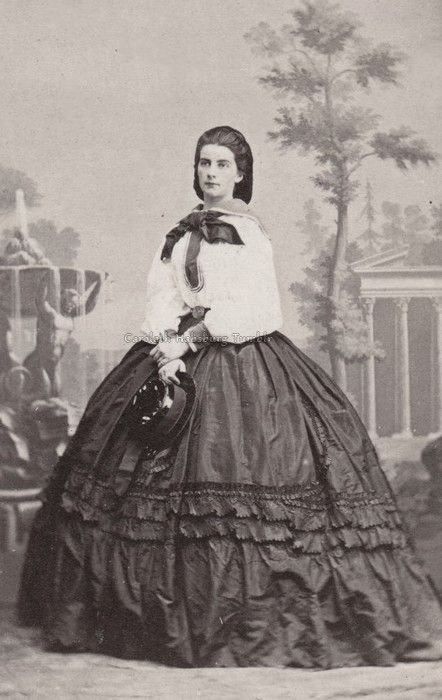
Princess Margaret

Princess Beatrice of Edinburgh, Duchess of Galliera.
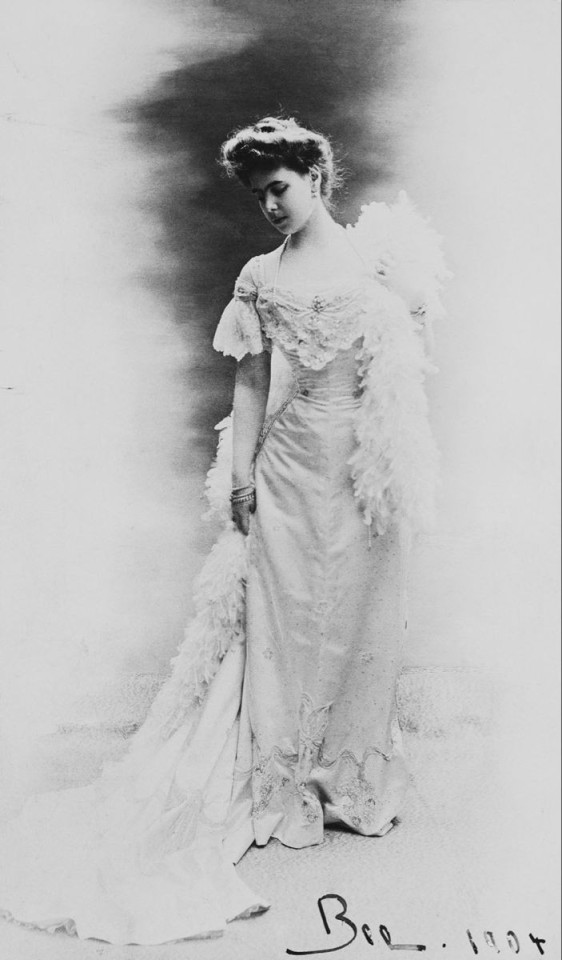
#answered ask#queen alexandra#alexandra of denmark#empress maria feodorovna#dagmar of denmark#grand duchess tatiana nikolaevna#victoria princess royal#empress victoria of germany#maud of wales#queen maud of norway#grand duchess elisabeth feodorovna#elisabeth of hesse#queen sophia of greece#princess sophia of prussia#queen marie sophie of the two sicilies#duchess marie sophie in bavaria#princess margaret#countess of snowdon#princess beatrice of edinburgh#duchess of galliera
14 notes
·
View notes
Text
Tamara could have easily gone the way of the Bohemians, with her interest in painting and later photography (she's not particularly artistically talented, but learned to make sure to immortalise as much of Varchas in paint and canvas as she can before the memories become too blurred and distorted), but she'd accidentally found a new calling.
At present she's involved in a scheme with one Margaret Hawes, Society Lady, ensnaring rich society types in scandal. One well-timed photograph and a tip to the press, and the scandal is enough to get any respectable society type sent to the Tomb Colonies!
Said marks would often try to bribe their way out of these compromising photos reaching the newspapers, however whatever they can offer does not compare to the cut that she (and now Tamara) get from the Venderbight business owners, whose entire economy has been absolutely booming due to the influx of rich exiled Londoners.
#tamara#margaret#hey guys remember margaret#the maid of accidentally murdered her boss the empress in a rube goldberg loony toons style accident fame#and darling of the antiroyalists#well she's back and found a new grift#and has to find some new art because oof my initial try was rough#lineart and i are not friends#and the more i think about this the more i want to involve jones in this somehow#because it would be incredibly funny for them to try to scandal trap him#man who accidentally lives at 7 scandal at all times in-game
12 notes
·
View notes
Text
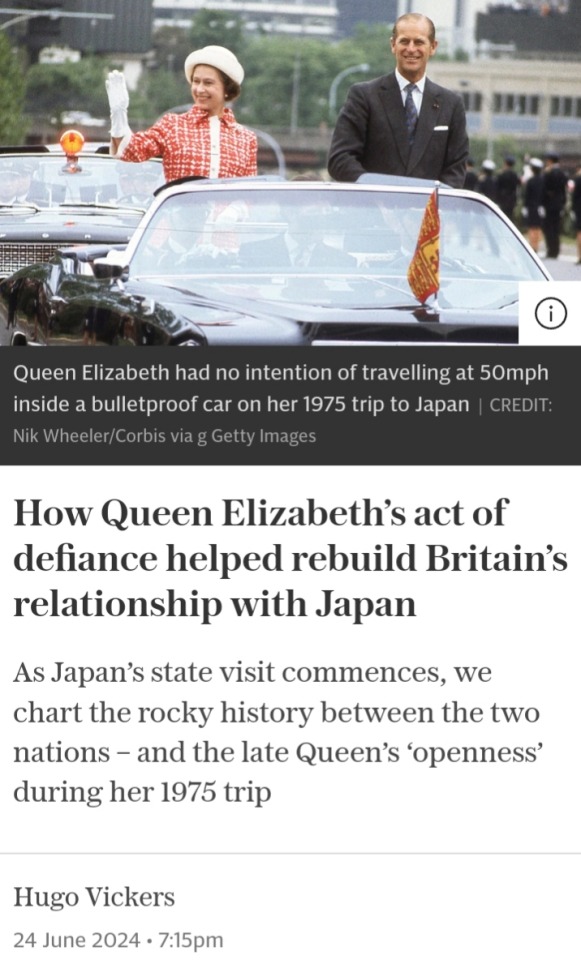
General elections are hardly famous for diplomatic exchanges.
But Rishi Sunak and Keir Starmer are sure to learn some lessons in pragmatism when Emperor Naruhito officially begins his state visit on 25 June.
What will they talk about if they attend the formal banquet at Buckingham Palace, as they are both expected to do, and at which they will perhaps be just a few seats apart?
Naruhito’s unexpected love of the Thames Barrier – he studied the history of cargo-carrying on the river during his spell at Oxford University – will surely appeal.
But the manner in which the British and Japanese royal families have rebuilt bridges after the deep scars of the Second World War might be a more illuminating place to start.
Those scars – the result of Japan’s crimes across the Asia-Pacific and the cruel treatment of British prisoners of war – had left a legacy of resentment that lasted long after the hostilities officially ceased in 1945.
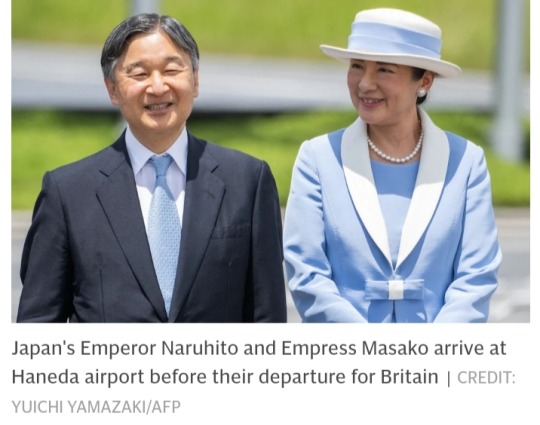
The pressure was on the young Queen Elizabeth II to restore good relations.
Though she rose to the occasion, making huge progress during her reign, the reconciliation was gradual to say the least.
In fact, when official diplomatic relations were restored in 1952, proceedings nearly fell at the first hurdle – over the Emperor’s Garter star.
When the new British Ambassador, Sir Esler Dening, presented his credentials to Emperor Hirohito, the Emperor’s household asked the British Foreign Office if he should wear what they called his “Garter rosette” when he received the ambassador.
The BFO said they preferred that this question had not been asked in the first place, given that Hirohito had of course picked the wrong side to align with during the war.
The exchange also highlighted what a delicate issue Garter honours had become.

To rewind: It’s a tradition for Japanese Emperors to be made British Knights of the Garter.
By 1952, three had had the honour:
Emperor Mutsuhito, who was appointed in 1906 in recognition of the Anglo-Japanese Alliance of 1902; Emperor Yoshihito in 1912, and his son, Emperor Hirohito in 1928.
Emperor Mutsuhito, who was lucky to be appointed in the first place, had never actually left Japan, and Edward VII did not want him to have it because Mutsuhito was a non-Christian monarch.
But Edward changed his mind after Japan’s 1905 victory over Russia and sent Prince Arthur of Connaught to Tokyo on a Garter mission to present the Emperor with the insignia.
Back then this journey was no trifle:
It took Arthur a month to sail from Marseilles to Yokohama to ask Mutsuhito to accept “the highest mark of friendship and esteem which it is in His Majesty’s power to bestow."
The Emperor was so delighted by the honour that he broke tradition and personally received him at the Imperial Palace.
Yoshihito made it out as far as Korea, but his disabilities and sickly disposition prevented him from much else.
His son Hirohito, meanwhile, was much more used to overseas visits.
He’d already visited Britain as part of a European tour in 1921, when he was a rather shy Crown Prince (the Duke of Windsor, as the Prince of Wales, visited Japan the following year).
After Hirohito succeeded as Emperor in 1926 he was appointed to the Garter, which was the cue for another long trip from England to Japan (this time by Prince Henry, Duke of Gloucester) to invest him.
But during the Second World War, Hirohito was regarded as an enemy alien, and his Garter banner was removed from St George’s Chapel and “placed in the vaults.”
Did he know of his demotion? Surely Dening would have maintained a dignified silence when he was pitching his ambassadorial services in 1952.
But the missing banner did cause minor concern ahead of Crown Prince Akihito’s visit to represent his father at the 1953 Coronation.
Luckily, when he laid a wreath in St George’s Chapel in honour of Queen Mary, who had lately died, he did not notice the absence of the Imperial banner.
Instead, his mind was on more youthful pursuits: during his visit, he was keen to go racing and attend Wimbledon.
Ever the astute hostess, the Queen duly invited him to the Derby.
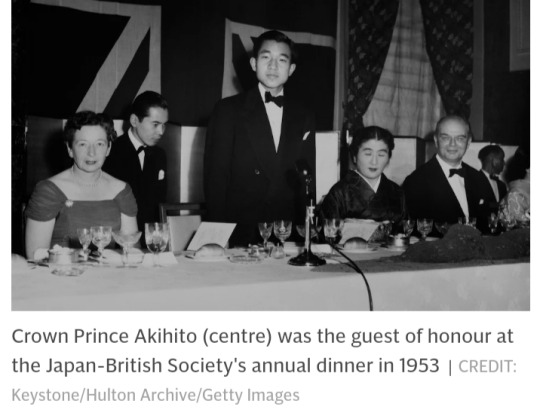
In those early post-war days, the bridge of cordiality that was slowly being built between Japan and Britain was as fragile as kintsugi porcelain.
A more important step towards reconciliation was needed and that came in 1961 when Elizabeth II’s cousin, Princess Alexandra, visited Japan.
She was accompanied by her mother’s private secretary, Sir Philip Hay, who had been a prisoner of war in the Far East, as a result of which he suffered recurring malaria.
Princess Alexandra found the Japanese very friendly but received letters asking why she had gone, since their families had suffered so gravely.
She told me that she gave him a “bottom scraper,” an unfortunately named device used for trawling the sea bed.
He was a marine biologist, having written several books on the subject and collected these objects.
Perhaps this inspired his grandson’s interest.
Whatever the Emperor made of his aquatic gift, he was undoubtedly more pleased by the fact that, during her visit, he was allowed to wear his Garter star.
During these and subsequent years, Princess Chichibu, the Emperor’s sister-in-law, worked tirelessly to improve Anglo-Japanese relations.
Her father had been Japanese Ambassador to Britain and she had been born in Walton on Thames.
With her husband, Prince Chichibu, she had attended the 1937 Coronation.
She became Patron of the Japan-British Society in Tokyo and had a prominent role during Princess Margaret’s visit for British Week in 1969.
At the time, Prince William of Gloucester even served at the British Embassy.
In 1970, King Charles III (as Prince of Wales) visited Japan, and the following year marked the first ever state visit by a Japanese Emperor to Britain when Hirohito landed on our shores once more.
When he accepted Queen Elizabeth II’s invitation, he addressed her as “Madam My Sister” and signed it “Your Majesty’s Good Brother.”
He added in his letter:
“I once visited your country when I was the Crown Prince and have always cherished the pleasant memories of it.”

It was enough to restore his full diplomatic standing: he was quietly reinstated into the Order of the Garter, and a new banner raised over his stall.
The British newspapers were less forgiving:
Private Eye produced a particularly disparaging front cover, and David Walker, at the Foreign Office, wrote that his impression was “that the press became more hostile as the visit wore on.”
The public made their feelings known too: though the Emperor’s arrival at Victoria passed off smoothly, a man was arrested in the Mall for a mild incident, and a protester dug up the tree the Emperor planted at Kew.
Many more favourable column inches were devoted to the visit in the Japanese press, but the British Ambassador conceded: “the misdeeds of the past still remain alive.”
The return state visit by Queen Elizabeth II and Prince Philip in 1975 was a game-changer, however.
As part of it, the Queen wanted to drive through Tokyo in an open convertible Cadillac.
But Sir Fred Warner, the British Ambassador, was aware that there was “a tradition in Japan of political assassination” and that the Japanese police had a “proper fear” for the Queen’s safety.
President Gerald Ford had visited shortly before and had been guarded by an astonishing 160,000 Japanese police.
As Warner put it, “might as well have been wearing a cloak of invisibility.”
The original plan for the Queen was that everywhere she went, she should be driven at 50mph in a car with dark bullet-proof glass.
Unsurprisingly, this held no appeal for her: the Queen got her way and what became known as “the Open Car Drive” passed into Japanese history.
Since it passed off well, the Japanese police emerged as heroes of the plan.

The effect was that the Emperor, who led a somewhat cloistered existence, was impressed by the openness of the British Royal family.
The members of the Imperial family “felt that a window had been thrown open and a gust of fresh air let into their lives.”
On both sides, the overwhelming view was that the Queen’s visit, with its innovative approach to visibility, had “marked a significant step towards reconciliation and renewal of old friendships.”
Prince Philip played his part too, making a virtue of lying by omission.
During the state visit he was frequently asked: “Your first visit to Japan?”
“Yes”, he said.
In truth, he had been in Japan in 1945 at the time of the Japanese surrender.
When Emperor Hirohito died in 1989, Prince Philip volunteered to represent the Queen, feeling he was the right person to do so, since he had served in the war and did not mind any criticism that might come.
A decade later, in 1998, it was Hirohito’s son Akihito’s turn to pay a state visit to Britain.
But this time, the press were more pro-actively hostile: one TV station sent a car down to the house of a former POW to film him looking at his photos from the war.
They also took him by car to the Mall to film him setting fire to a Japanese flag – directing the cameras so that the state procession could be seen passing behind him.
This was despite the fact that Emperor Akihito, unlike his father, had played no part in the Second World War.
Akihito was given the Garter on his visit. Naruhito will also receive it on his.
He’s an Anglophile, having attended Oxford’s Merton College between 1983 and 1985.
During that time, while studying the waterways of Britain, he wrote:
“The name of the Thames conjures up in me feelings of affection and nostalgia transcending distance and time.”
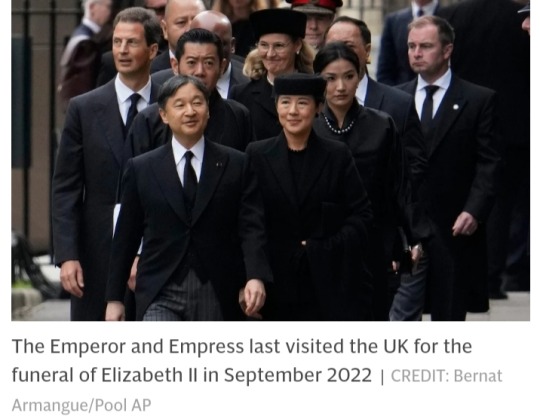
In 2006, King Charles wrote of “the close friendship between the United Kingdom and Japan, which is reflected in the solid bond between the Imperial and Royal Families.”
This visit will further cement that bond – something that the Emperor will reflect on when he privately visits St George’s Chapel at Windsor on June 27 to lay a wreath on the tomb of Queen Elizabeth II.
There, the Garter banner of his father will be above his stall, and the stallplates of his predecessors in their stalls – a permanent record of years of growing friendship.
#Emperor Naruhito#Empress Masako#Queen Elizabeth II#Prince Philip#King Charles III#Imperial House of Japan#Japanese Royal Family#British Royal Family#Japan State Visit 2024#Emperor Hirohito#Sir Esler Dening#British Foreign Office#Garter rosette#British Knights of the Garter#Emperor Mutsuhito#Emperor Yoshihito#Edward VII#Prince Arthur of Connaught#Prince Henry#Duke of Gloucester#Queen Mary#Princess Alexandra#Princess Chichibu#Princess Margaret#Prince William of Gloucester#Sir Fred Warner#US President Gerald Ford#Open Car Drive
14 notes
·
View notes
Text

Margaret Theresa of Hapsburg, Spanish infanta and Holy Roman Empress, for my newest peer @marianadecarlos
8 notes
·
View notes
Text

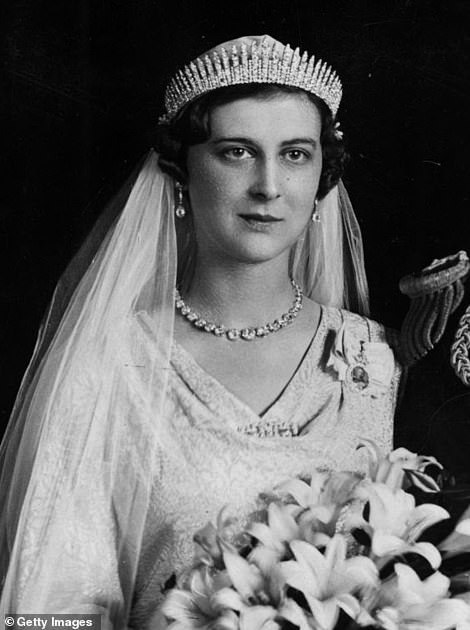
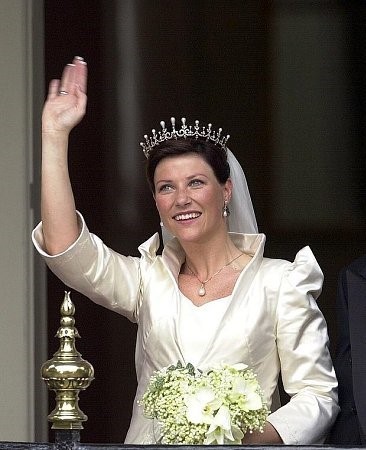


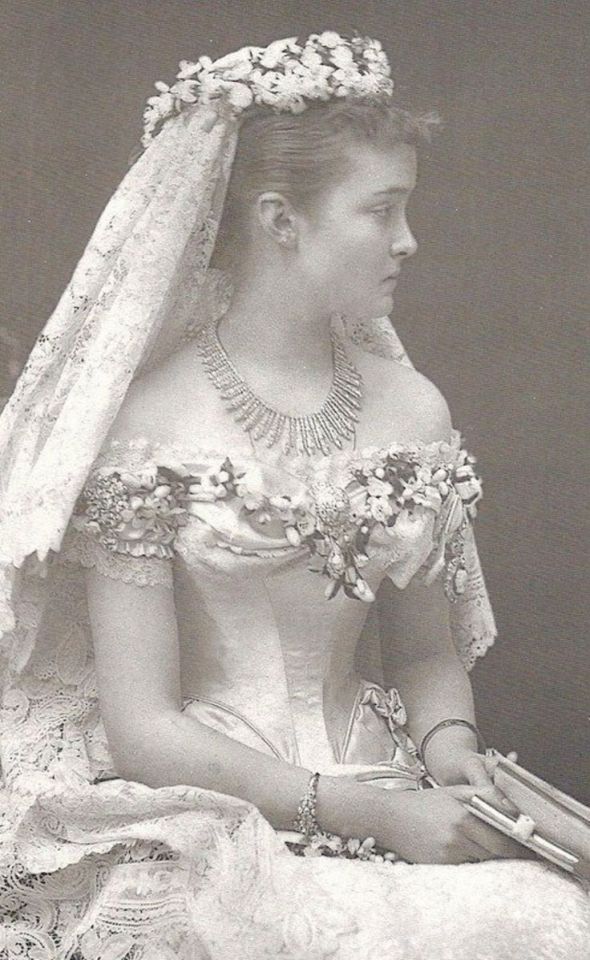

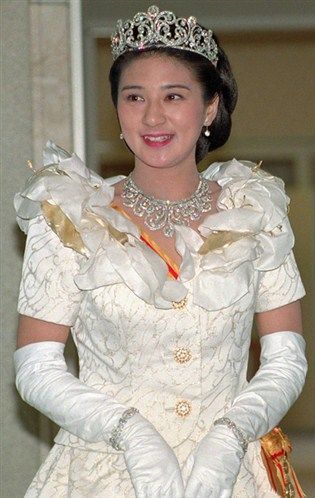


My 10 favorite royal bridal necklaces in no specific order.
#queen elizabeth ii#princess marina#princess martha louise#queen elizabeth#queen mother#lady helen taylor#lady helen windsor#princess louise#princess louise margaret#katharine duchess of kent#duchess of kent#empress masako#queen alexandra#alexandra of denmark#princess margaret#countess of snowdon#royal jewels#jewels#royal weddings
14 notes
·
View notes
Photo

The Empress. Art by Katherine Hillier, from A Totally Unofficial Adventure Time Tarot Deck.
#Katherine Hillier#A Totally Unofficial Adventure Time Tarot Deck#The Empress#Major Arcana#Tarot#Adventure Time#Margaret the Dog#Animals#Dog
100 notes
·
View notes
Text
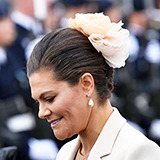








Royal Hat Appreciation (335/∞)
#crown princess victoria#empress masako#queen margrethe ii#duchess of edinburgh#lady gabriella windsor#princess hisako#princess margaret#princess margaretha#royaltyedit#royal fashion#hat spam#mine
26 notes
·
View notes
Text
During [the spring and summer of 1141], a number of contemporary narrative sources agreed that Matilda’s sudden and unexpected success went straight to her head. Matilda’s most renowned modern biographer has suggested that “conduct acceptable in a powerful king . . . was not acceptable in a ‘Lady of the English’. This line of reasoning can be taken quite a bit further. It is clear that contemporaries expected Matilda to emulate the behavior of those women who had previously held the rank of regina, and act like a queen consort while performing the office of king. Most queens consort, however, did not have to consolidate recognition of their position as Matilda was constrained to do. Nearly all the chroniclers who had marveled at her assumption of power turned on her immediately. Not surprisingly, the Gesta Stephani took the greatest exception:
She at once put on an extremely arrogant demeanor instead of the modest gait and bearing proper to the gentle sex, began to walk and speak and do all things more stiffly and more haughtily than she had been wont.
But other more sympathetic chroniclers also joined this chorus of disapproval: Henry of Huntington described her as “elated with insufferable pride” while the Worcester chronicler noted her “hard heart” as she strove to consolidate her position. Had she been a man, Matilda’s decidedly authoritarian style might have passed for a regal show of strength. Indeed, Matilda probably felt that if she was to hold on to her newly acquired status, she needed to behave like a king. Thus, Matilda’s forward movement from recognition of her status to the execution of her office was fraught with gendered difficulties concerning how a woman ought to conduct herself.
...As she anticipated her crowning, Matilda strove to consolidate her dynastic claims and establish her authority. It seems reasonable to suppose that Matilda looked to her father and her first husband for examples of successful kingship as she did for representational purposes. Both Emperor Henry V and King Henry I were suspicious, uncompromising, relentless, and ruthless in the pursuit of their aims. Probably both would have advised Matilda to follow their example. This was exactly what St. Bernard told Queen Melisende of Jerusalem following the death of her husband: “show the man in the woman; order all things . . . so that those who see you will judge your works to be those of a king rather than a queen.” Much of Matilda’s behavior during the spring and summer of 1141 can be explained as the emulation of male gendered kingship. But kings had the built-in advantage of female consorts to soften the more hardboiled aspects of their rule; Matilda had played that very role herself for her first husband. Nevertheless, in 1141, Matilda eschewed the feminine aspects of queenship completely, in effect negating what could have been useful symbolism to bolster the construction of her authority. But for Matilda to be perceived as a soft, forgiving, and gentle woman at the one moment she needed to consolidate her position at the top of a male dominant political society would not have been practical.
But by constructing herself as a female feudal lord, and emulating male gendered kingship, Matilda annoyed contemporary observers. The chroniclers’ hostility may have been due to the fact that Matilda was claiming kingly sovereignty for herself alone, and not in association with either her husband or her eldest son. The Gesta Stephani described Matilda as not only arrogant, but also spurning the advice of her chief advisors, the earl of Gloucester, her uncle King David of Scotland, and the “kingmaker” himself, the Bishop of Winchester. The Gesta implied that if Matilda had behaved as a deferential woman, and heeded the counsel of her male advisors, she could have devised a means to permanently depose Stephen, and be crowned and anointed in his place. The Gesta placed Matilda’s ultimate failure at her own door, blaming it on her arrogant reliance on her inferior, womanly intellect and emotions.
Matilda’s hard-line stance, acceptable in a male king, bothered the authors of the Worcester chronicle and the Gesta, suggesting that contemporaries were confused by what they wanted the “Lady of the English” to do, indicating that, as a woman and a domina, she should behave gently like a queen rather than forcefully like a king. Combined, all the chroniclers, with the exception of Malmesbury, suggested that Matilda should have used the intercessory powers of queenship to set Stephen free, moderated the harsher aspects of her father’s rule, and excused the Londoners from financial support. Although a more diplomatic approach might have helped, freeing Stephen at that moment in time would have realistically served no practical purpose in establishing Matilda’s authority. And, in denying Eustace his inheritance, Matilda was only imitating the efforts of her father, Henry I, who also dealt harshly with challengers to his throne. Henry I kept his elder brother Robert Curthose in prison until he died, and prevented his nephew, William Clito, Curthose’s heir, from gaining any aspect of the Anglo-Norman inheritance. Matilda wished to convince her contemporaries that she was quite capable of being a king, but their reactions betrayed hostility toward her as a woman presuming to establish kingly authority.
-Charles Beem, "Empress Matilda and Female Lordship", The Lioness Roared: The Problems of Female Rule in English History"
#i got an ask about this topic a few hours ago so here you go!#historicwomendaily#empress matilda#the anarchy#12th century#english history#queenship tag#my post#queue#I really dislike the way most general histories talk about Matilda and frame her actions#Even when they begin on a sympathetic note they still emphasize how she had a 'difficult personality' and sabotaged herself#...did she? because her father and her son behaved exactly the same and it worked out for them#'She should've just been more compliant and LISTENED to people' - and then she would have been viewed as weak and pliant.#There is very little compassion for her extremely complicated situation and how gendered expectations & misogyny were almost entirely#responsible for how contemporaries perceived and judged her#This pattern is also evident with historians' frustrating tendency to compare Matilda (a REGNANT) to Stephen's queen Mathilde (A CONSORT)#even though their roles and expectations were entirely different#Matilda is often compared to other English consorts (Isabella of France; Eleanor of Aquitaine; Margaret of Anjou) as well#which makes even less sense and is 10x frustrating#Matilda - as female king in her own right with a contested claim - was in a very unique and anomalous situation#and any attempt to compare her to consorts ends up downplaying and misunderstanding her situation#I've noticed a similar pattern with Jeanne de Penthievre (female claimant of Brittany) where her role and authority is often compared#to her rival claimant's consort Joanna of Flanders#Which – once again – is entirely illogical as both women had entirely different roles and expectations and authority
15 notes
·
View notes
Text
Oh my god. Right before kanji is introduced is when you start getting close to nanako and it makes me think the kindness and gentleness Yu experiences between the both of them helps him interact with each of them and have such a sweet relationship with them god I love how sensitivity is an important part of p4 and how being able to have compassion for another is important and a gift and I think nanako and kanji are the best parts of that for Yu they’re so sweet <3
#og#destiny p4g replay#kanji posting#soukan#soukan posting#nanako posting#nanako and big bro posting#justice posting#emperor posting#Yu is really the third piece of the dojima family that helps bring them together I think that’s why Margaret is the empress she helps bring#out the nurturing nature#and is one of his main guides within the spirit realm a role model to look to#ofc he’s kind and soft and gentle ajd someone good to lean on with his bonds#he’s just so good#narukami posting#I love Yu so much
16 notes
·
View notes
Text
Kanji spends time helping out Margaret and Hisano!


#The Naked Truth#arcana swap#arcana swap au#arcanaswap#arcanaswap au#Persona#Persona 4#Persona 4 Golden#Margaret P4#Aeon Arcana#Hisano Kuroda#Devil Arcana#Marie P4#Marie Persona 4#Empress Arcana
2 notes
·
View notes
Photo

“I wish to see another royal who have "THAT REGAL PRESENCE" similarly to Empress Elisabeth of Austria and Hungary, Queen Alexandra of Uk,Grand Duchess Tatiana, and Princess Magaret.” - Submitted by n-rnova
39 notes
·
View notes